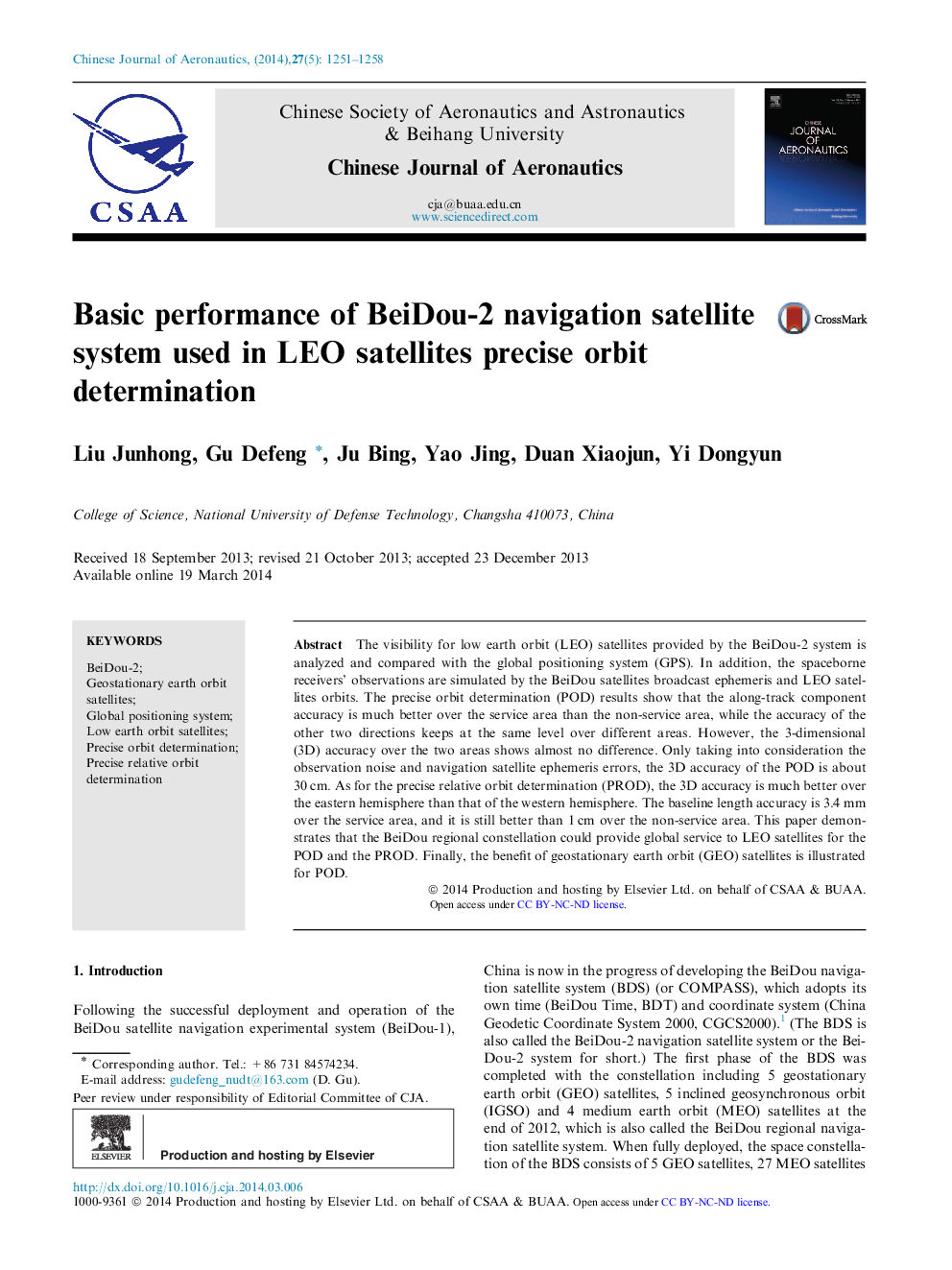| Article ID | Journal | Published Year | Pages | File Type |
|---|---|---|---|---|
| 765900 | Chinese Journal of Aeronautics | 2014 | 8 Pages |
The visibility for low earth orbit (LEO) satellites provided by the BeiDou-2 system is analyzed and compared with the global positioning system (GPS). In addition, the spaceborne receivers’ observations are simulated by the BeiDou satellites broadcast ephemeris and LEO satellites orbits. The precise orbit determination (POD) results show that the along-track component accuracy is much better over the service area than the non-service area, while the accuracy of the other two directions keeps at the same level over different areas. However, the 3-dimensional (3D) accuracy over the two areas shows almost no difference. Only taking into consideration the observation noise and navigation satellite ephemeris errors, the 3D accuracy of the POD is about 30 cm. As for the precise relative orbit determination (PROD), the 3D accuracy is much better over the eastern hemisphere than that of the western hemisphere. The baseline length accuracy is 3.4 mm over the service area, and it is still better than 1 cm over the non-service area. This paper demonstrates that the BeiDou regional constellation could provide global service to LEO satellites for the POD and the PROD. Finally, the benefit of geostationary earth orbit (GEO) satellites is illustrated for POD.
